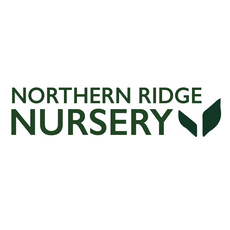Top 10 Container gardening Tips for Vibrant Small Spaces
Container gardening is a creative and accessible way to bring more greenery into small spaces. Whether you have a tiny apartment balcony, a small courtyard, or just a windowsill, Container gardening offers a versatile solution to cultivate a range of plants, from striking flowers to fresh herbs and vegetables. Dive into these top 10 Container gardening tips to maximize your small space's potential and create a lush, vibrant garden.
1. Choose the Right Containers
Starting with the appropriate containers is essential in setting the stage for successful Container gardening. Consider the following types:
- Material: Options include terracotta, plastic, wood, and metal. Each has its benefits and depending on your climate and the plants you choose, one might be more suitable than the other.
- Drainage: Ensure your containers have adequate drainage holes to prevent waterlogging, which can be detrimental to plant health.
- Size: Match the container size to your plant's root system; a pot that’s either too small or too big can hinder plant growth.
- Climate: Opt for plants suitable for your area's climate and the amount of sunlight available.
- Space: Opt for compact or dwarf varieties that are known to thrive in confined spaces.
- Compatibility: Combine plants that have similar light, water, and nutrient requirements.
- Look for a mix designed specifically for container plants. These are usually lighter and provide better drainage.
- Consider making your own. Combine peat moss, vermiculite, and compost to create a nutrient-rich mix that holds moisture yet drains well.
- Check water daily: Containers dry out faster than traditional gardens, especially in warm weather.
- Use self-watering containers: These can help reduce the frequency of watering and are ideal for thirsty plants.
- Mulch: Applying a layer of mulch to the surface of the soil can help retain moisture.
- Using a balanced, water-soluble fertilizer every few weeks during the growing season.
- Incorporating slow-release fertilizers into the potting mix at the beginning of the season.
- Position: Place containers in a spot where they will receive the optimal type and duration of sunlight according to their specific needs.
- Rotation: Regularly rotate your plants to ensure all sides receive equal light, promoting even growth.
- Inspect regularly: Check for signs of infestation and address them promptly to prevent spread.
- Natural remedies: Use soapy water, neem oil, or introduce beneficial insects like ladybugs to combat pest problems.
- Spring: Prep your containers by refreshing the potting mix and starting new plants or seeds.
- Summer: Focus on watering and protecting plants from excessive heat.
- Fall: Start planting cool weather plants and consider moving sensitive plants indoors.
- Winter: Protect plants from frost and provide insulation to pots if needed.
- Trimming: Remove dead or overgrown branches and leaves to encourage new growth.
- Deadheading: For flowering plants, remove spent flowers to promote further blooming.
- Varying heights: Use stands or stacked containers to create levels and depth.
- Thematic grouping: Arrange plants according to color themes or types to create a cohesive look.
Be creative with your container choices—old barrels, colorful ceramic pots, and even recycled items can add character to your garden.
2. Pick the Right Plants
Choosing plants that will thrive in your specific environment and container size is crucial. Consider the following:
Whether you are looking for a splash of color or a practical herb garden, selecting the right plants is key to a successful container garden.
3. Use Quality Potting Mix
Unlike traditional garden soil, a quality potting mix is crucial for Container gardening, as it provides the right structure and nutrients. When choosing your potting mix:
Refresh the potting mix annually to replenish nutrients and keep your plants healthy.
4. Consider Watering Needs
Proper watering is critical in Container gardening due to limited soil volume. To optimize plant health:
Remember, the needs can vary between different plants, so monitor the moisture levels and adjust accordingly.
5. Feed Your Plants Regularly
Nutrients are quickly depleted in a container setting, so regular feeding is necessary to maintain vibrant growth. Consider:
This will help your plants grow robust and healthy, producing lush foliage and bright blooms.
6. Maximize Light Exposure
Understanding and optimizing light exposure is crucial. To ensure your plants get the light they need:
This ensures that your plants remain vibrant and healthily balanced.
7. Protect Against Pests
Container plants are not immune to pests. To protect your garden:
This proactive approach will help keep your container garden healthy and thriving.
8. Seasonal Adjustments
Adjust your gardening practices with the changing seasons:
This year-round attention ensures your container garden remains vibrant regardless of the season.
9. Prune and Groom
Keeping your plants pruned and groomed helps maintain their shape, encourages growth, and improves overall health. Regular care involves:
This will keep your plants looking tidy and lush.
10. Get Creative with Arrangement
The arrangement of your containers can add to the aesthetic appeal of your space. Enhance your garden by:
This not only maximizes space but also enhances the visual impact of your garden.
Embrace the Beauty of Container gardening
Container gardening is a rewarding way to beautify small spaces and enjoy nature's bounty. With these top ten tips, you're well on your way to creating a thriving, vibrant garden that brings joy and color to your environment. Don’t hesitate to experiment with different plants and layouts, and most importantly, have fun as you watch your garden flourish!
Ready to turn your small space into a flourishing garden? Browse our collection of high-quality containers and gardening accessories today, and start your Container gardening journey!










